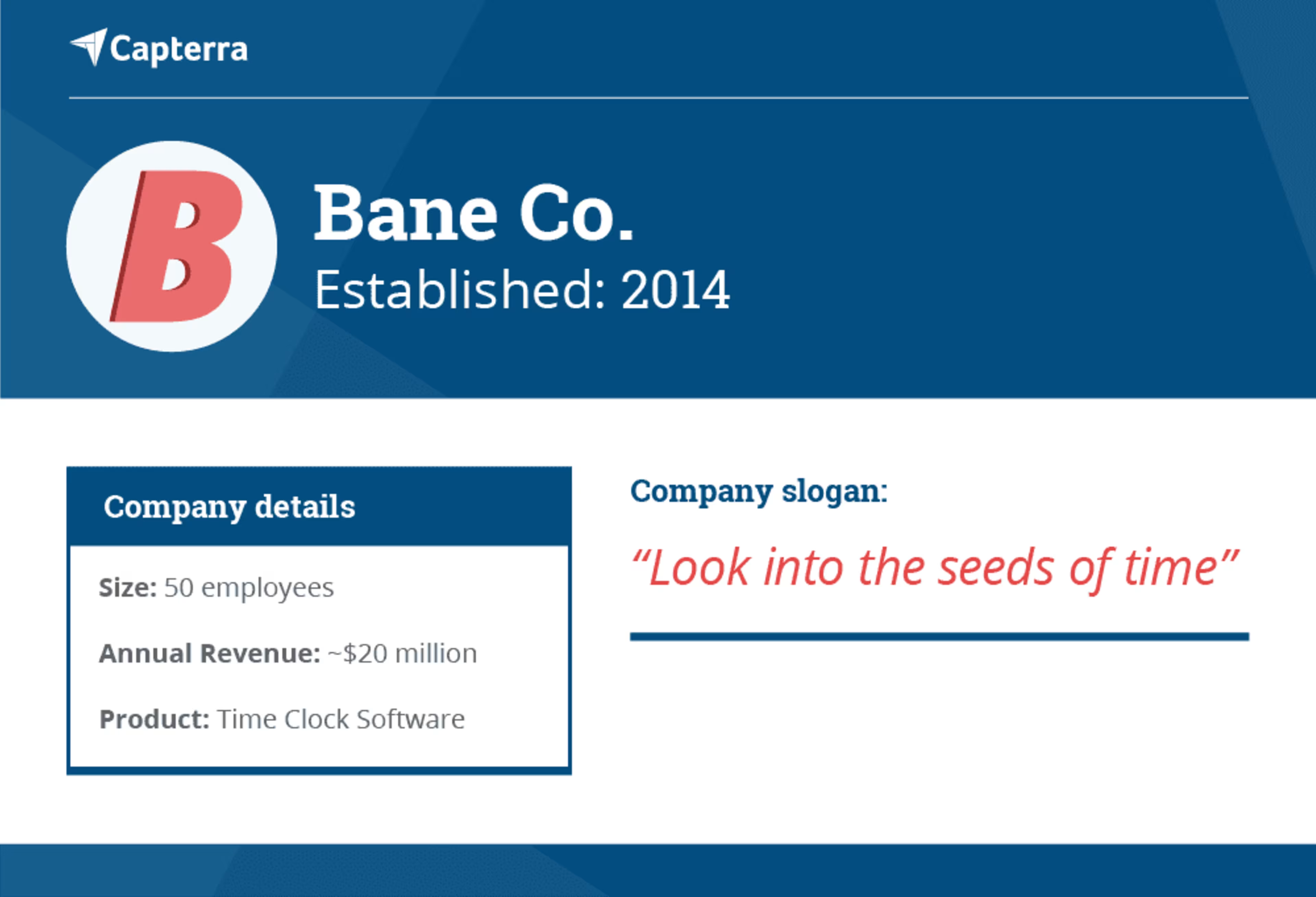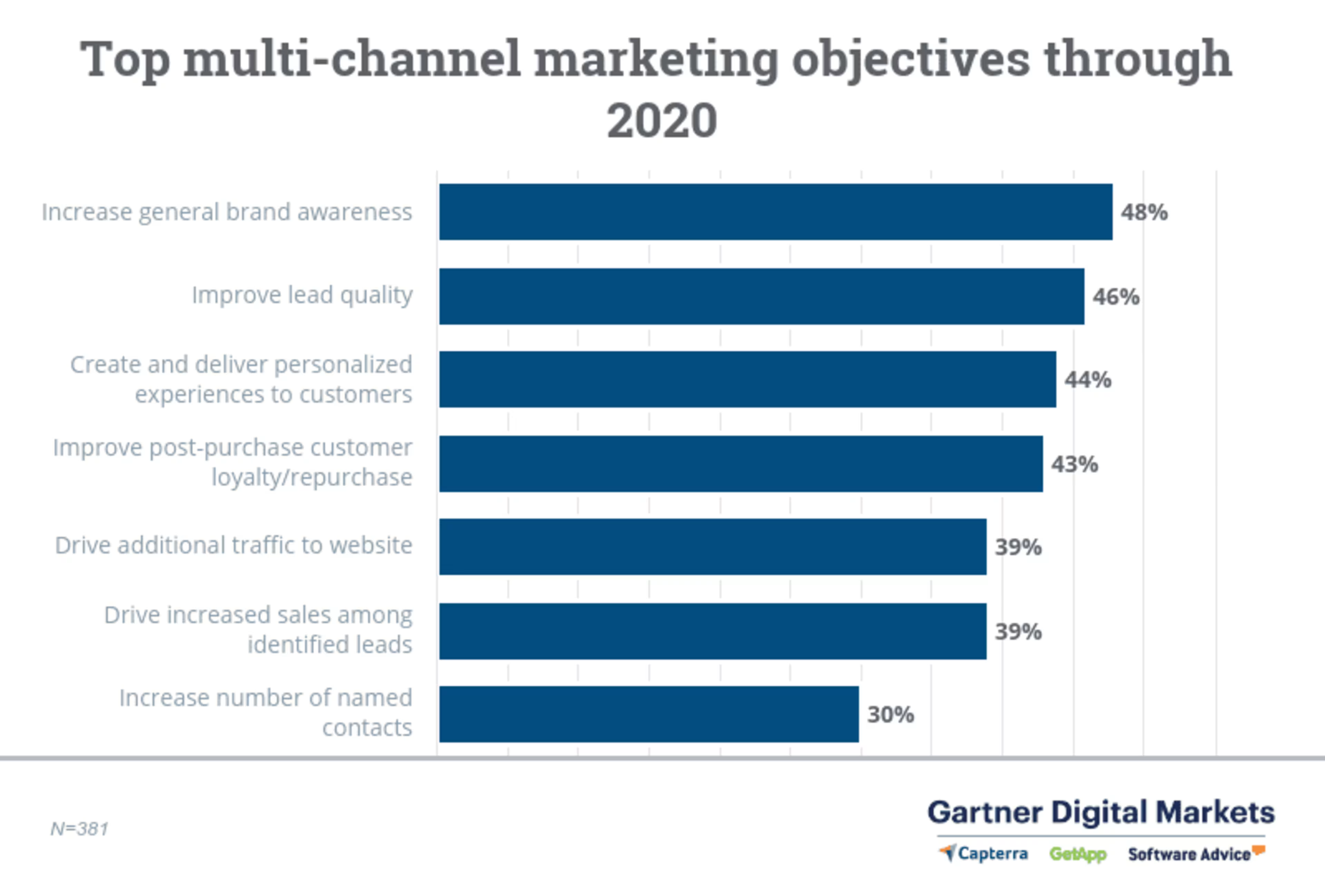Your company has a lot to say, but are you saying it effectively? Learn how to tailor your voice for every marketing channel you use.

“A rose by any other name would smell as sweet," says Shakespeare, and while André 3000 and Big Boi might disagree, I want to talk about the flawed idea that voice matters less than the message.
We're looking at ever-evolving channels of communication. In Shakespeare's time, the primary social media platform was a town crier. He probably would have misused hashtags and didn't even know what "yeet" means.
Things have changed. Voice matters just as much as the message.
Businesses are increasingly making use of multichannel branding opportunities. However, not all channels reach the same audiences, and creating a unified voice that speaks to all audiences can prove incredibly challenging.
Focusing your voice on a consistent brand identity while allowing for differentiation based on channel and key lead demographics can keep the marketing message consistent and unlock the best outcome for multichannel branding.
To explore the best way to do this, we're going to create a fictional company, build out a potential multichannel branding (MCB) strategy for them, and have our panel of experts determine the merits of that plan.
Who are our panel of experts? We reached out to 20 small-business leaders in digital marketing and asked them 10 questions on their best practices for multichannel marketing, then summarized the key themes from their responses and opinions.
What we may be: Creating a fictional company
Let's first build a fictional company.

Bane Co. is looking to formulate a coordinated, multichannel marketing campaign.
It wants to increase its brand awareness and catch higher-quality leads lower down in the funnel. It focuses the majority of its efforts on Twitter, Facebook, and LinkedIn.
It's decided to keep the copy for all of its campaigns consistent across channels to maintain its sense of brand identity.
So how do you think its plan looks? Let's turn to our panel of experts:
Strong reasons make strong actions: Setting your goals in multichannel branding
Bane Co. has a strong sense of what it wants to get out of this campaign: It wants to increase brand awareness, and it wants to catch leads lower down in the funnel.
Our panel of experts listed both of these as some of the strongest cases for multichannel branding.
This goes along with the results of a 2019 Gartner survey: 48% of respondents seek to increase general brand awareness with their campaigns, while 46% want to improve the quality of their leads.

According to our experts, there are a few other notable reasons to embark on multichannel branding: generating new touch points for audience engagement and showing off different facets of your business.
Part of this is rooted in the fact that different people use different media for different purposes. They also use them at different times, so those additional touch points give you more unfettered access to your audience.
Panel verdict: So far, so good
Always enter a new marketing campaign, including multichannel branding, with a strong sense of purpose.
If there were a symphony in choice: Choosing the right platform
Make sure you're selecting the right channels for your goals. According to that same Gartner survey, 54.3% of respondents say that they find mapping their message to audience channel preferences at least moderately challenging, and 41% worry that the challenge will persist.
Bane Co. didn't establish who their target audience is.
While it knows it wants higher-quality leads lower in the funnel, and it wants to increase brand awareness, it never specified who those leads are.
Figure out your target demographic
What Bane Co. should do is look to their most recent sales. What demographic does it fit? What do those buyer personas look like?
Once it has figured out who their target audience is, it needs to look into how their leads and customers from that demographic found them in the first place.
This will clue Bane Co. in to which channels might prove the most useful for reaching that target demographic.
Target particular channels for different stages of the funnel
Because Bane Co. is looking to increase brand awareness and catch people lower down in the funnel, it needs to employ several different types of channels and be very particular in which ones it chooses.
Social media platforms are excellent for increasing brand awareness, as they have a sense of ubiquity about them (the average number of social media accounts a person has is 2.3).
However, Bane Co.'s second goal of catching higher-quality leads lower in the funnel can't be accomplished as easily on Twitter or Facebook. Our experts recognize that LinkedIn usually hits leads later in their buyer journey, so that is a strong choice for the company.
There are other options for channels that hit leads later in their customer journey such as email marketing and vendor-generated content (a blog or guest post on websites and publications).
Understand the community of different channels
This is especially true of social media channels, but each touch point has its own community and its own guidelines for formatting and expectations.
An Instagram post makes full use of hashtags (up to 30), while a post on Facebook would be derided for even using one. These community guidelines require careful adherence for any branding to be effective.
Beyond simply formatting, the community for your chosen channels could require or prohibit visual components, which will also affect your branding. It could also impact the number of posts you can make or the number of times you can engage with your audience.
Knowing that community is important, and it also means that you will, inevitably, need to develop different voices for different channels.
Panel verdict: Not quite there
Bane Co. needs to figure out who its target demographic is and what channels it uses before it can understand how best to reach them.
Our experts also caution against trying to address too many channels at once.
We know what we are: Balancing voice and message
According to our experts, if you have a single purpose for your multichannel branding initiative, such as increasing brand awareness or improving customer service/retention, then it becomes very easy to establish a single core message for the campaign.
However, that's not what Bane Co. is seeking to do. It has two core facets of its business it is seeking to impact.
While their brand identity must remain intact, it needs to have two separate messages for their two separate purposes.
Change your voice for each channel
As we've established, each channel has its own key demographics and its own guidelines for engagement. This also means you have to change your voice for each channel.
Full disclosure: Our panel was split. Half of our experts say that you should let the audience determine the voice you use (a more opinionated tone on Twitter, a more fact-based and data-driven tone on LinkedIn, etc.). The other half say that your brand voice should remain consistent to avoid confusion.
I'll say this: I don't think the two are mutually exclusive. You can follow different guidelines that you've set for yourself in terms of tone while still settling into the cadence and voice that's most effective in different channels.
But how do you figure out which voice is appropriate? You don't want to stereotype the users, but you don't want to alienate them.
A/B testing is your friend
Don't go into this blind—read what your competitors post on their platforms. Otherwise, you'll come off sounding inexperienced.
A/B testing is a costly and time-intensive process, so make sure that you have a targeted test to help abate some of the cost. And the fact remains that not all businesses can afford to do it, even with a targeted test, so keep an eye on your budgets. Given Bane Co.'s size, though, it should be able to do some A/B testing without much of an impact to their bottom line.
But what exactly are you testing? Is it just the voice?
Not exactly—in fact, there are a number of things you should test to help not only with your messaging but about your general approach to engagement:
Voice
Timing
Formatting
Graphics
Responses
Posting rate
All of these tie into how you're communicating your core message.
By tracking your data and seeing which posts get more responses, you can decide what voice is the most effective at conveying your message and engaging your customers.
This is of pivotal importance–one of the biggest mistakes businesses just starting their multichannel branding strategy can make is not basing it on data.
Panel verdict: A bit of a mixed bag
Bane Co. starts out alright with the idea of using the same copy for all of their channels as a starting point for their campaign.
However, it doesn't have a plan for testing or changing its voice for each of the different channels, nor does it have a plan for shifting their voice or messaging based on their goals and test results.
Ultimately, their campaign will present a consistent brand, but it isn't an effective multichannel branding strategy because it has no built-in mechanism for adjustments or dynamic voicing.
To hold our destiny: What's next for you
Now that you've seen what Bane Co. is doing wrong, it's time to march for Dunsinane Hill with your own branding strategy.
That can be intimidating, especially if you don't have the right tools. But if you're looking to bulk up or slim down your marketing software to what is absolutely necessary, here are what our panel of experts recommended you invest in:
Thinking about hiring a branding agency for help optimizing your multichannel branding? Browse our list of top branding agencies and learn more about their services in Capterra’s hiring guide.